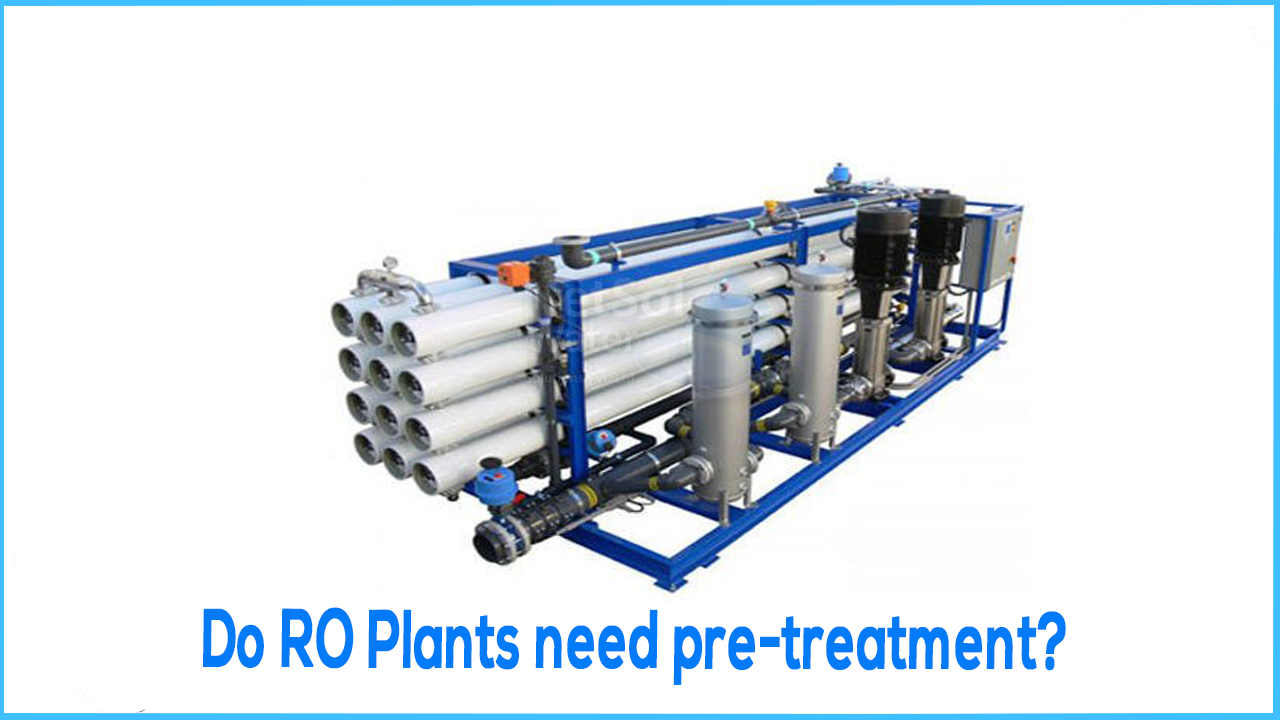Do RO Plants need pre- treatment? If yes, why?
Reverse Osmosis (RO) is one of the most used technologies for water treatment today, both in the public and private sectors. RO plant manufacturers supply both large municipal facilities and smaller communities, and RO equipment also has widespread commercial uses, for example in the food and beverage industry.
Because of its importance to business and public health, it is critical that things run smoothly,because even once, part of a unit breaks down, the whole unit will shut down and people will go without clean water for days. Not just people will have problem in drinking water but if the breakdown happens in a hospital, it will be disastrous as patients will not get clean water to drink, food cannot be cooked in clean water, instruments cannot be sterilised etc.
Some of the effects if breakdown of RO system occur:
- 1. Lack of drinking water availability: Water sources can be extremely contaminated, even close to toxic levels. Municipal reverse osmosis systems contribute significantly to guaranteeing at least a minimum level of potable water in urban and rural centres.
- 2. Loss of independence: Many small groups like residential complexes, have built their own RO systems today. It is highly recommended in populated cities where municipal water supplies are clearly inadequate. A bad reverse osmosis system will mean the loss of supply on which these communities depend.
- 3. Business Loss: For commercial plants, reverse osmosis plant breakdown incurs proportional loss. This means that production doesn’tgo as planned affecting sales and reputation of the firm.
On the other hand, pre-treatment can have the following benefits:
By extending the life of the reverse osmosis system –
Many system owners and operators still believe that regular maintenance is sufficient to ensure proper operation of the system. However, manufacturers of reverse osmosis systems recommend a suitable mechanism for pre-treatment. Extremely polluted water requires pre-treatment. Pre-treatment reduces stress on the RO membrane which is a very expensive component of the RO plant.
Some of the problems faced by an untreated reverse osmosis system are:
- 1 .Contamination - The feed water in most reverse osmosis systems is quite contaminatedby both visible and invisible pathogens. These invisiblepathogens are collected in large quantities on the membrane to block it out and make it foul, the process is called fouling. This alters flow and pressure in the treatment scheme. This reduces the life of membrane and increases cost of treatment. Since fouling is inevitable, pre-treatment only slows down the process of fouling. To reduce contamination , water is simply filtered beforehand .
- 2. Scales- Water accumulation causes scaling. RO membrane starts fouling rapidly when concentration of dissolved contaminants increase in water. As a result, the reverse osmosis operation is hindered and low quality water is discharged.
- 3. Mechanical Failures - Some damage can occur due to installation errors such as: Difficult start-up of feed water or back pressure,both can damage the membrane.
- 4. Effect of Chemicals- Thin membranes are generally used for RO systems and they are advantageous for the speed of the system but they can easily be destroyed by chemicals present in water like chlorine.
Other general effects-
- a. Reduced membrane life
- b. Increased operating costs
- c. Poor water quality
In most cases, reverse osmosis manufacturers offer a complete installation with pre-treatment tools and equipments. These can include filter devices, plasticizers, antifouling, and activated carbon. These devices can extend the life of the system easily and inexpensively



